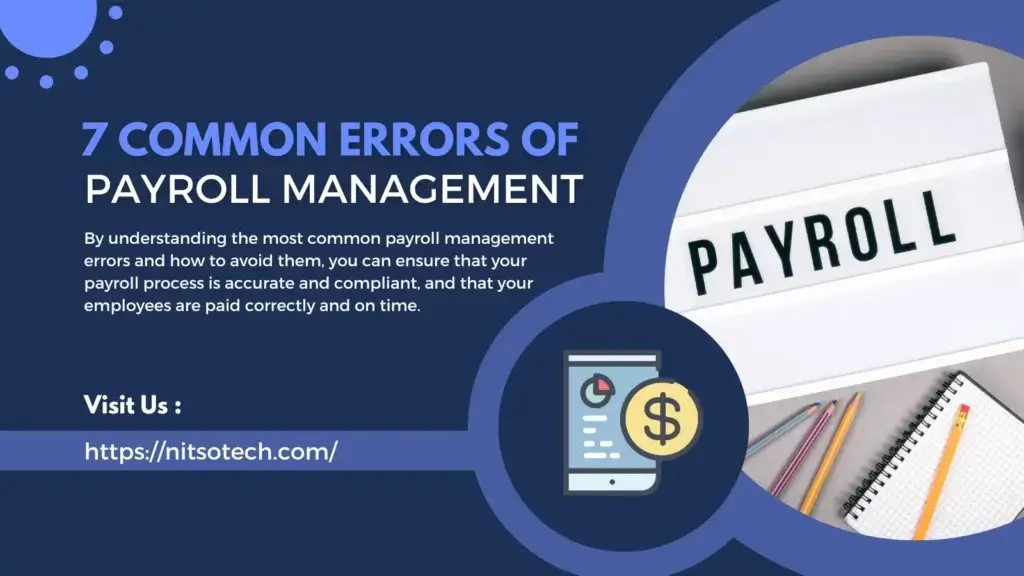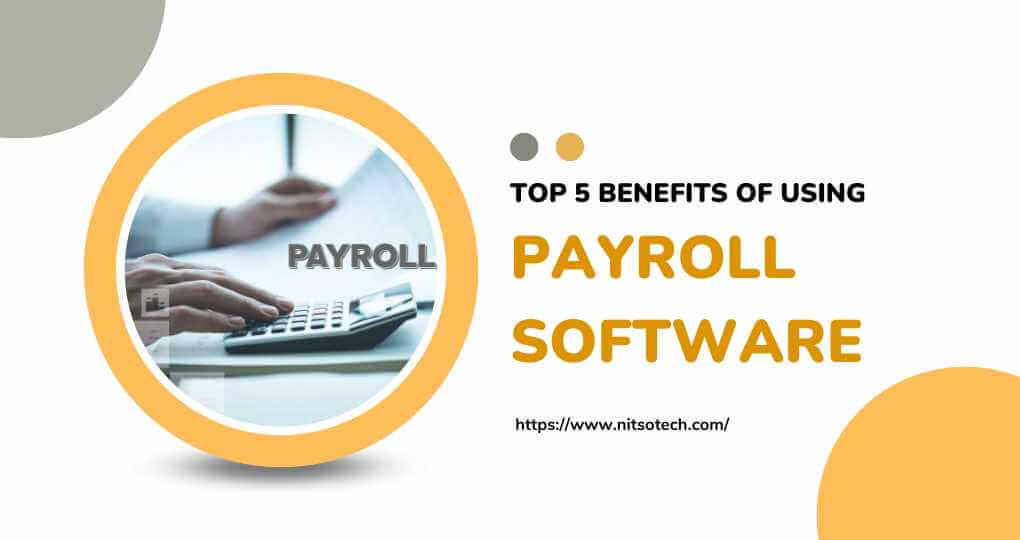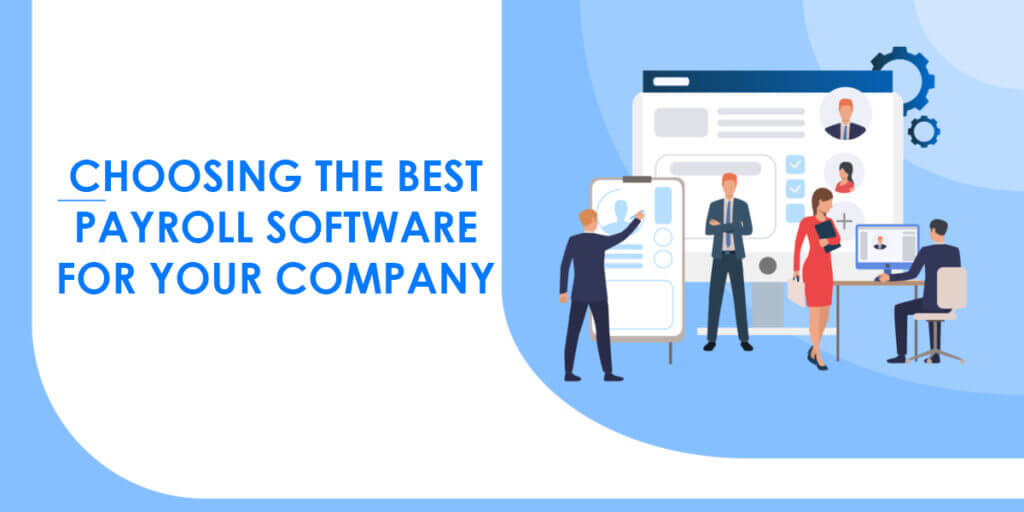As an HR professional, while onboarding new employees, the payroll tasks beyond the basics are usually not your responsibility. However, ensuring that the employees are being paid correctly is crucial, as you are the point of contact for addressing any pay-related grievances. To achieve this, you need a system that streamlines payment processes and ensures that your business complies with IRS regulations. Some HR systems come with a pre-installed payroll module, but if yours doesn’t, it’s worth inquiring with your software vendor to see if they can add it. In this article, we will explore the top 5 amazing benefits of using payroll software for your business.
Table of Contents
Top 5 Amazing Benefits of Using Payroll Software
Payroll software is a valuable tool that can help businesses of all sizes manage their payroll processes more efficiently and accurately. From automating calculations to streamlining compliance, payroll software can provide a wide range of benefits that can save time and money for businesses. Now, we will explore the top 5 amazing benefits of using payroll software: efficiency, accurate calculations, cost savings, reporting and record-keeping, and data security. Whether you’re a small business owner or a manager at a large company, understanding these benefits can help you make an informed decision about investing in payroll software for your business.
- Efficiency: Payroll software automates many of the manual tasks associated with processing payroll, such as calculating taxes and deductions, which can save a significant amount of time for businesses. For example, instead of manually calculating each employee’s paycheck, the software can quickly and accurately process multiple paychecks simultaneously. This can save time for other important tasks, such as managing employee benefits or recruiting new hires.
- Accurate Calculations: Payroll software can help ensure that payroll calculations are accurate and comply with all relevant laws and regulations. This can reduce the risk of errors and penalties from the government. For example, the software can automatically calculate and deduct the correct taxes for each employee based on their income and exemptions. This can prevent mistakes that could lead to penalties and fines.
- Cost Savings: Payroll software can also help businesses save money by reducing the need for manual labour and minimizing the risk of errors. For example, a small business using a manual payroll system will have to pay a salary to an accountant to handle the payroll. But payroll software can automate the process and save the cost of hiring an accountant.
- Reports and Record Keeping: Payroll software can generate various reports that can be used to track employee information and payroll data. It also records all the transactions, which can be used for future reference. For example, a business can use the software to generate reports on employee hours worked, vacation time taken, and taxes withheld. This can help managers make informed decisions about staffing and budgeting.
- Data Security: Payroll software also provides a high level of data security to protect sensitive information such as employee personal data, payroll data, and bank account information. For example, the software can use encryption to protect data transmitted over the internet and can also include access controls to prevent unauthorized users from accessing sensitive information. This can help prevent data breaches and protect businesses from potential legal liabilities.

Other Benefits of Using Payroll Software
Payroll software can provide many benefits to businesses, such as automating manual tasks, increasing accuracy, and reducing costs. However, there are other benefits businesses can gain from using payroll software. Following are some of the other benefits of using payroll software, such as Direct Deposit, Self-service portals, Compliance, Time tracking, Integration with other systems, Online Access, and Customizable.
- Direct Deposit: Payroll software can facilitate direct deposit of employee paychecks, saving time and money for both the employer and employees. This eliminates the need for paper checks and the associated costs of printing and mailing them.
- Self-service portals: Many payroll software programs offer employee self-service portals, which allow employees to access their personal payroll information, such as pay stubs and W-2 forms, and make changes to their personal information. This can save time for the employer and increase employee engagement.
- Compliance: Payroll software can help ensure compliance with all relevant laws and regulations, such as taxes and employee benefits. This can help prevent penalties and fines and ensure that the business complies with all legal requirements.
- Time tracking: Some payroll software programs also include employee time and attendance features. That can help businesses manage labour costs and accurately pay employees.
- Integration with other systems: Some payroll software can integrate with other business systems, such as accounting or human resources software. That can further streamline payroll processes and improve data accuracy.
- Online Access: With payroll software, employers and employees can access their payroll information anytime and from any location with an internet connection. This can be useful for remote workers or businesses with multiple locations.
- Customizable: Many payroll software programs are highly customizable, which allows businesses to tailor the software to their specific needs. This includes creating custom pay rates and deductions, setting up payment schedules, and customizing reports.
Note: It’s important to remind employees to regularly check their payroll information, especially if they have experienced significant life changes such as a move. This helps to ensure that the information is up to date and accurate and can prevent issues arising from missed inspections due to outdated or incorrect information.

Mistakes You Should Avoid When Using Payroll Software
Payroll software can be a valuable tool for businesses, automating many of the manual tasks associated with processing payroll and helping to ensure accuracy and compliance. However, it’s important to use the software correctly to avoid mistakes that can lead to errors and compliance issues. In this section, we’ll discuss some common mistakes businesses make when using payroll software and how to avoid them.
- Not keeping the software updated: It’s important to keep the payroll software updated to ensure that it’s running smoothly and that any bugs or security issues are addressed. Not updating the software can lead to errors and potential security risks.
- Not training employees properly: If employees are not properly trained on how to use the payroll software, it can lead to errors and inefficiencies. It’s important to provide proper training to employees to ensure they can use the software effectively.
- Not keeping accurate records: Payroll software can automate many tasks, but it’s still important to maintain accurate records and double-check calculations. Not keeping accurate records can lead to errors and compliance issues.
- Neglecting to backup data: Regularly backing up payroll data can help protect against data loss due to system crashes or other issues. Neglecting backup data can lead to the loss of sensitive information and could be a major problem for the company.
- Not reviewing the data: Even though payroll software can automate tasks, it’s essential to review the data it generates. Not reviewing the data can lead to errors, making it difficult to identify and fix problems in a timely manner.
- Not reviewing compliance: Payroll software can also automate compliance, but it’s important to review compliance-related data, such as tax forms and deductions, to ensure that the software is configured correctly and that all applicable laws and regulations are being followed.
- Not testing the software: Before using the payroll software, it’s important to test it to ensure that it’s working properly and that all data is correct. Not testing the software can lead to errors and inefficiencies.
For more information, follow this link: Common Payroll Management Errors and Tips to Avoid Them.
In Conclusion
In conclusion, payroll software can provide many benefits for businesses, such as increasing efficiency, ensuring accurate calculations, and saving money. However, it’s important to use the software correctly and avoid common mistakes such as not keeping it updated, not training employees properly, and failing to keep accurate records. By setting up and using payroll software properly, businesses can streamline payroll processes, reduce the risk of errors, and comply with all relevant laws and regulations.
Related Articles








0 Comments